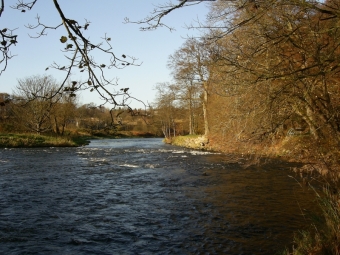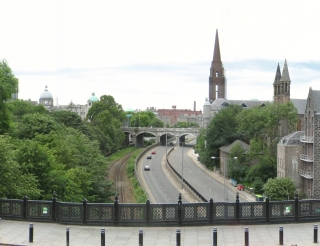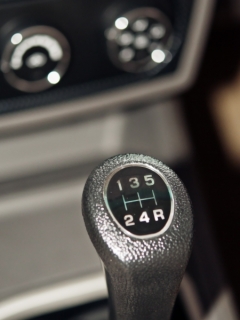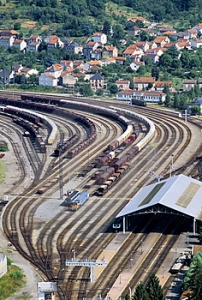By David Innes.
“You’re a boy fa kens fit’s goin on, usually,” said The Mannie Fae Along The Road to me this morning, as his crouching Jack Russell grimaced, strained and squeezed alarmingly on the other end of the lead he was holding,
“Fit’s the story wi the signs up aboot roadworks on Ellon Road for the next fortnicht?”
I’d noticed that myself. As a Bridge of Don resident anxious to avoid the road works on neighbouring stretches of Ellon Road during the past two summers, I bit the bullet and just left earlier. By bike.
It’s only eight miles across the city, and the Nigg Brae isn’t really all that steep. No, really, it isn’t. Aye, right.
The road works themselves are necessary, given that Ellon Road looks like Berlin’s Unter den Linden must have done in late April 1945, although the Soviet tank drivers were apparently a tad more polite and less-susceptible to Wut der Straße , aka road rage, than the 4×4 jockeys of the A956.
This necessary carriageway closure has not in the past, however, stopped the Gypit Tendency, vox-popped in the local press, from complaining about delays to fix the roads they girn about during the rest of the year.
Michty, they only had two weeks’ warning of the works planned via the foot-high electrical digital display boards mounted along the route in 2010 and 2011, and the illuminated message about this year’s scarifying and tarring has already been spearing through the fog for days on end.
The Mannie Fae Along The Road listened attentively as I explained David’s Bridge of Don Traffic Theorem Number Five.
“When the A956 is shut as it was at this very time last year, and the year before, or narrowed as it is likely to be next week, then Brer Commuter, in general, pays little heed to the forewarnings and expects that s/he can leave Bridge of Don, The Great Dunes of Scotland area, Ellon and all points north and west, and still travel to their city destination in the same time.
“On encountering the inevitable snarl-ups, they bear this for the first journey, raging silently and furiously at the inconvenience. By home time, they are rat-running, using a route they assume will not have been sussed out by others. On encountering the inevitable snarl-ups, they are to be witnessed raging silently and furiously at the inconvenience. I could do this as a flowchart, you know.”
The Mannie Fae Along The Road’s brow knitted, purled and then unknitted slightly.
“Will that cause a redd-up on Jesmond Drive then?” he checked, “It did the last time.”
“I can’t say for certain,” I offered, “but I can’t see that the closure of Ellon Road, the resulting delays and frustration and the redd-up, as you put it, are unconnected”.
“The seener they build that Third Brig ower the Don the better then,” he ventured.
He sensed my disapproval.
“Pffffft” and “Tssssscccchhhh” are the best phonetic transcriptions I can offer of the non-language sounds I emitted, stopping just short of uttering expletives.
“No?” he timidly queried.
“Well, if you think about it, the Third Crossing will be designed to take the weight off The Parkway, the Haudagain roundabout and Ellon Road, but to get to it, vehicles will need to get to The Parkway. How might they do that?”
He ruminated, almost audibly as pennies dropped. I counted 1s. 8d. at least.
“Well, aff Ellon Road at the Exhibition Centre roundabout for the traffic comin in fae Peterheid direction, I suppose?”
“So, knowing that they can get to a new Don Crossing from The Parkway, are they all going to queue patiently to turn right at the AECC? Might not some of them, or rather a lot of them, decide that the shortcut from Murcar via Scotstown Road, perhaps via Greenbrae and Dubford, might be an option to save queuing and time?”
“Aye, I suppose there is that til’t”.
“And of course, they’ll all head straight along Scotstown Road to The Parkway and turn right, won’t they?”
“Awa min, of course they winna, they’ll…..
nip…..
along…..
Jesmond…..
Drive…………”
The noise coming from the Penny Falls in his head sounded like someone had turned three melons on the Mains of Scotstown one-armed bandit.
“I never thocht o’t like that”.
“Your grandchildren, two of them are at Middleton Park Primary, aren’t they?” I enquired.
“Aye, deein weel, but there’ll be an affa steer o traffic roon aboot their yokin time”.
“And outside Greenbrae School and Glashieburn. Try getting out of Asda when the traffic is incessant from your left. Watch the residents of the sheltered housing opposite Asda trying to cross the road. Calculate how late the number 2 and 5 buses will be, caught up in it.
“Then the whole farrago’s played out again from four o’clock onwards, but in the opposite direction. Anyone heading along Jesmond Drive from the Ashwood direction is going to be queuing to turn right into Whitestripes Avenue to get to The Parkway as traffic heads towards them.
“Imagine trying to edge your car out of Newburgh Drive or Jesmond Avenue between 7.30 and 9.00, and between 4.00 and 6.30?”
“It’ll be a bit o a steer, by the soonds o it…”
“What else seems to be unknown by drivers from this side of town who just want to get across the river, is that they’ll just be queuing in a different place. The plans for the crossing say that Bedford Road will be closed, and only buses and smartarse cyclists like me will be able to use it.
“St. Machar Drive will be a T-junction at Tillydrone Avenue. With traffic lights! Anybody trying to avoid traffic in King Street or Great Northern Road by crossing into Tillydrone is going to come up against the same congestion, maybe even worse, on St. Machar Drive.
“Then there are the U-turns at King Street / St. Machar Drive, since nobody’s going to be allowed to make a right turn into the university from St. Machar Drive. And there’s the cost of changing the roundabout at the top of St. Machar Drive to deal with the increase in traffic coming up the Drive.”
“Maybe nae sic a good idea efter a’ then?”
“Not thought through, but it’ll give us something else to moan about if it ever gets built”.
http://www.oldaberdeen.org.uk/third_don_crossing.html
http://thirddoncrossing.files.wordpress.com/2012/01/thirddonc-rossingcpo-finalsubmission.pdf
- Comments enabled – see comments box below. Note, all comments will be moderated.





